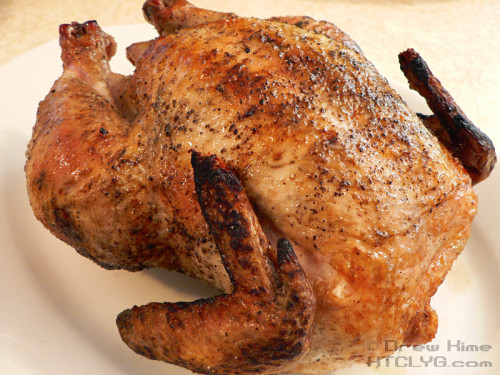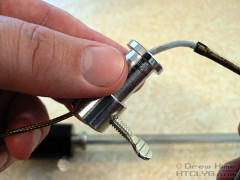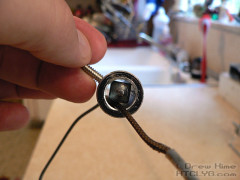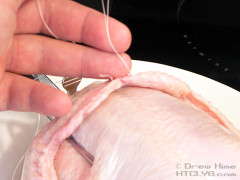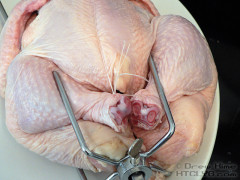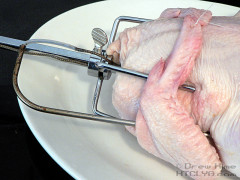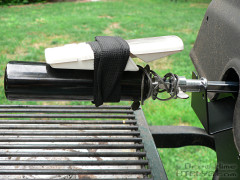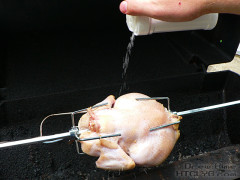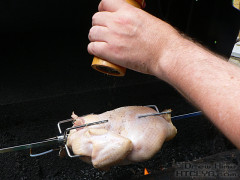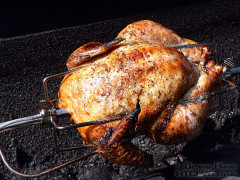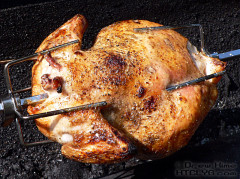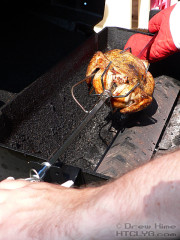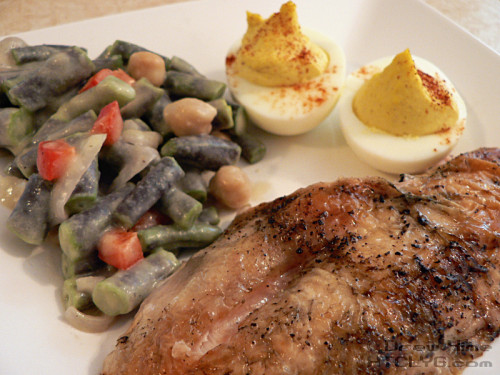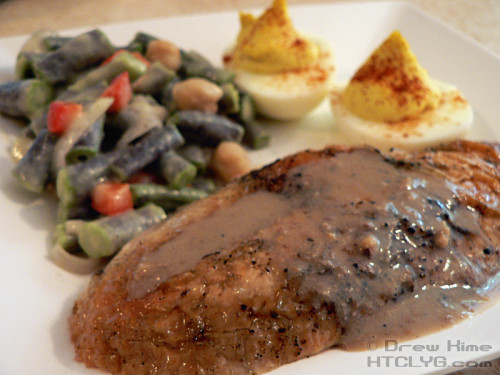I bought myself a new toy for my birthday. A rotisserie attachment for my grill. The main thing I wanted it for is to do a standing rib roast this coming Christmas. Yup, I’ll be huddling in the garage, with the grill set up in the doorway. Hopefully it’ll be snowing, that would make for some great pictures.
But just to break it in, I did a chicken. I’ve had the rotisserie chickens you can buy at the grocery store, and they’re actually pretty good. But of course I think I can do better. Cockiness, confidence or delusion, you be the judge.
Ingredients
 one whole chicken, 3-5 pounds
one whole chicken, 3-5 pounds
kosher salt
fresh ground black pepper
Directions
Apparently some people treat rotisserie chicken as seriously as some other people treat ribs and chili. They’ve got their own secret rub, all kinds of techniques, massive preparation. Seems a bit overkill to me.
I know that as long as the skin is crispy and has some salt and pepper, and the inside is still moist, it’s going to be good. So I intentionally went with the easiest possible way to make this. If I end up needing to do more, that’s fine. But I didn’t want to start out with some elaborate preparation and spend the next 40 years wasting my time with stuff that just doesn’t matter.
That’s why there’s only three ingredients listed above. Nope, not even any oil or butter on the bird before it goes on the spit. But what I did do was wire up the spit with the probe for my digital thermometer. This was a test run for when I do the rib roast, so I wanted to see if it would work.
First step was to run the probe through the collar that rests in the support, and make sure the spit still fits through the collar.
So far so good. And as you can see in the ingredients picture above, I also ran it through the fork that was going to go at the neck end of the chicken.
Next was to tie up the wings and legs so they don’t hang down into the flames. I forgot to get the butcher’s twine, so I figured I could stitch it up with heavy-duty thread, just like I do with the thanksgiving turkey. Hook the wingtips together across the breast …
… then hook the ends of the legs together. I was also able to tuck these into the forks on my spit.
Once the forks were in place and the chicken wasn’t going anywhere, I tucked the probe in behind the wing, and inserted the tip in the thigh, since that’s the part that needs to come to the highest temperature.
Now, with the wire running through the collar, I strapped the display part of the thermometer to the handle of the spit and set it for 135° so I’d have a bit of warning that it was nearly done.
As it rotated, I gave a good coating of salt and pepper all the way around.
If I had oiled the bird, I could have seasoned it before even putting it over the flame. As it was, I had to wait until it had gone around for a couple of minutes and the fat was starting to melt out. Once the self-basting started, the salt and pepper stuck just fine.
This was a pretty small bird, only 3-1/2 pounds, and I had the flame set a bit high. I just got a new propane tank, and even with the knobs turned all the way down it was pretty high. I had to turn down the valve on the tank to get the flame to stop reaching all the way up to the bird. Between the size of the bird and the too-high flame, the thermometer was already beeping when I went to check after about 40 minutes.
I was expecting an hour or more, but it looked good all the way around and the thermometer showed 165°. Okay, good enough for me.
You can see that the thread on the wing-tips had burned off. Oops. Luckily they stayed pretty much in place, and it was only the very tips of the wings that burned. And the flare-ups were getting to be pretty steady, so I was afraid it would burn if I left it on much longer.
I was able to hold this up just from the handle, but I didn’t want to take a chance dropping it so I used the heavy-duty mitt to grab the other end of the spit.
I lifted the spit off straight up, but as I was walking toward the house I tilted it a little bit. About a cup of juice ran out of the cavity. Man, I wish I had captured that for gravy. Next time.
Let it rest for 10-15 minutes before carving.
Since this bird was so small, I sliced the breasts off whole. Cut down along one side of the breastbone and follow the wishbone down the the thigh joint. Then cut along the bottom and remove the whole breast. (Hmm … I really should have taken pictures of that. It sounds more complicated than it really was.)
My wife decided to have it without the gravy. “I saw what it looked like before you made it.” Oh well. Her loss.
The girls and I had it with the gravy.
Oh, and the deviled eggs and the purple bean salad.
And that’s it.
